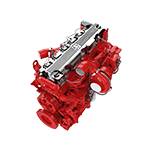Nov . 27, 2024 03:27 Back to list
Brake Drum Relining Techniques for Improved Vehicle Performance and Safety
Brake Drum Relining Ensuring Safety and Performance
Brake systems are one of the most critical components of any vehicle, playing a crucial role in ensuring safety while driving. Among the various parts that make up the brake system, the brake drum is vital, particularly in drum brake systems, which are commonly found in many cars, trucks, and buses. To maintain optimal performance and safety, it is essential to understand the importance of brake drum relining.
What is Brake Drum Relining?
Brake drum relining involves replacing the friction material inside the brake drum. This process is necessary when the existing lining material has worn down, which can lead to decreased braking efficiency and potentially hazardous driving conditions. The relining process typically includes removing the drum from the vehicle, replacing the worn linings with new ones, and then reinstalling the drum. This process not only revitalizes the braking system but also prolongs the life of other related components.
Signs That You Need Brake Drum Relining
Several indicators can signal the need for brake drum relining
. Common signs include1. Squeaking or Squealing Noises If you hear a high-pitched sound when braking, it could indicate that the lining material is worn down and needs replacement. 2. Reduced Braking Efficiency If you notice that your vehicle takes longer to stop than usual, it’s a sign that the brakes are not functioning effectively, warranting an inspection and possibly relining. 3. Vibration During Braking If the brake pedal or steering wheel vibrates when you apply the brakes, the drums may be warped or out of alignment due to worn linings. 4. Visual Inspection A straightforward visual check can reveal whether the linings have reached their wear limit. If they are thin or unevenly worn, it's time for relining.
The Relining Process
brake drum relining

The relining process begins with a thorough inspection of the brake drums and associated components. A qualified technician will assess the condition of the brake drum itself, checking for any cracks, warping, or significant wear. If the drum is in good shape, the next step involves removing the old lining material.
After removing the worn linings, the technician may need to machine the drum to ensure it is true and free of imperfections. Once the break drum is prepared, new friction material is carefully fitted and bonded to the inner surface of the drum. The quality of the friction material used is crucial as it determines the effectiveness and longevity of the brakes.
After the relining is complete, the technician will reinstall the brake drum, ensuring that all components are properly aligned and functioning. Additionally, a brake system check will be performed to verify that everything operates smoothly.
Benefits of Regular Relining
Regular brake drum relining is essential not only for safety but also to maintain the vehicle's performance. Properly functioning brakes enhance the overall driving experience, providing confidence and control behind the wheel. Moreover, timely relining can save vehicle owners from costly repairs that could arise from neglecting worn brake components.
Additionally, regular maintenance, including drum relining, contributes to fuel efficiency. When brakes are functioning optimally, the engine doesn’t have to work as hard to overcome the excess drag caused by worn brakes.
Conclusion
In conclusion, brake drum relining is a fundamental aspect of vehicle maintenance that should not be overlooked. It plays an essential role in ensuring optimal performance and safety on the road. Regular inspections and timely relining can help prevent more severe issues, ultimately saving money and ensuring peace of mind while driving. If you suspect that your brake drums might need relining, it is crucial to consult a professional technician who can assess the situation and recommend the best course of action. Safe driving starts with reliable brakes, and brake drum relining is a key part of that equation.
-
HINO Industrial Solutions - ¡Ң���ຽ��е��������˾ | Advanced Efficiency&Customization
NewsJul.13,2025
-
HINO Industrial Efficiency Solutions - ¡Ң���ຽ��е��������˾
NewsJul.13,2025
-
HINO Industrial Solutions - ¡Ң���ຽ��е��������˾ | Advanced Technology&Reliability
NewsJul.13,2025
-
HINO Industrial Efficiency-Jiangsu Hino Industrial|Productivity Optimization&Cost Reduction
NewsJul.12,2025
-
HINO-¡Ң���ຽ��е��������˾|Advanced Industrial Solutions&Energy Efficiency
NewsJul.12,2025
-
Premium Brake Drum Iveco – Durable Drum Brake Drum & Brake Shoe Solutions
NewsJul.08,2025
